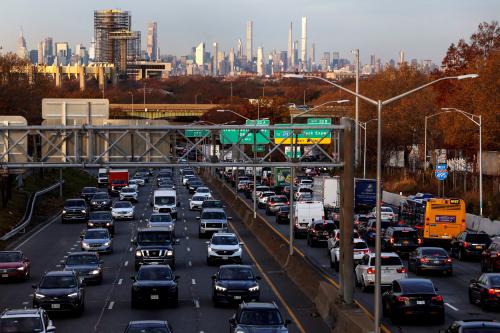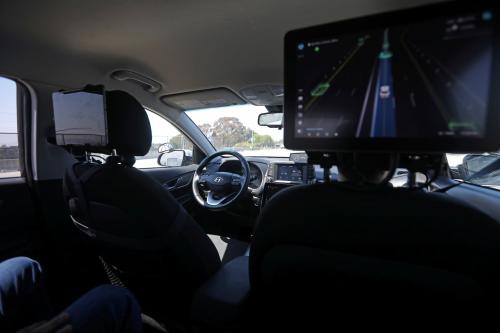American passenger rail is in the midst of a renaissance. Ridership grew by 55 percent since 1997 and is now at record levels, with over 31 million travelers annually. That’s faster than other travel modes like aviation and far outpaces the growth in population and economic output during that time. Travel corridors like New York to Washington, Seattle to Portland, and Chicago to Milwaukee all boast higher shares of riders on rails than in the air.
Painting such a rosy picture of American rail may seem incongruous to those that like to chastise its beleaguered carrier, Amtrak, for transgressions related to food service, timeliness, and subsistence on federal subsidies. But in a new report, my colleagues Adie Tomer, Joseph Kane, and I find that Amtrak is actually finding itself well-positioned for the future. Part of this was initiated by federal lawmakers who, in 2008, gave Amtrak the kick-in-the-pants it needed by ordering the establishment of metrics and benchmarking for performance.
Smartly, federal lawmakers realized that achieving better performance—both financially and operationally—could not come without a new kind of commitment from Amtrak’s partners. States now share the operating costs for short-distance rail corridors that stretch 750 miles or less from end to end. Today, these routes are Amtrak’s high-performers, carrying around 85 percent of travelers.
Importantly, once they have “skin in the game,” states are motivated to target investments more precisely and develop plans more comprehensively, better tailoring maintenance needs and capital improvements to local demands. Some states have already adopted such strategies and offer innovative and replicable models. North Carolina owns part of the tracks and encourages economic development along two different corridors. Virginia recently expanded service to metros lacking connections in the southwest and southeast portions of the state. Maine’s Northern New England Passenger Rail Authority presents a new governance model for forging partnerships and coordinating action.
Building on this new federal-state alignment will require additional action. As the federal sequestration battle clearly illustrates, Washington isn’t putting any new money into Amtrak anytime soon. But partly because of the existing partnerships with 15 states, Amtrak has said it can weather the cuts easily enough.
So let’s extend that requirement for state support to routes longer than 750 miles. After all, our research shows that the long-distance routes carried only 15 percent of the travelers in 2012 but, combined, constitute 43 percent of Amtrak’s route-associated operating costs. This is not just a matter of offloading responsibility from the federal government to states. As seen in the short-distance routes that already enjoy state support, such a partnership results in a better sharing of risks and rewards.
Then, in exchange for greater responsibility from Washington, states should have added flexibility in how they allocate existing funds. For example, current federal law allows states and metro areas to transfer funds between highway and transit programs. Among other benefits, this freedom of financing greatly assists in bottom-up problem solving and gives additional consideration to alternative solutions that achieve a more balanced transportation network. States and metro areas should have the same flexibility when they support operating or capital investments for intermetropolitan passenger rail.
The goal here is to strengthen passenger rail in the United States by strengthening the federal-state partnership. While Amtrak has done a lot to remake itself in recent years, states need to reaffirm their commitment for the model to be sustainable.
The Brookings Institution is committed to quality, independence, and impact.
We are supported by a diverse array of funders. In line with our values and policies, each Brookings publication represents the sole views of its author(s).



Commentary
New Partnerships for American Rail
March 1, 2013